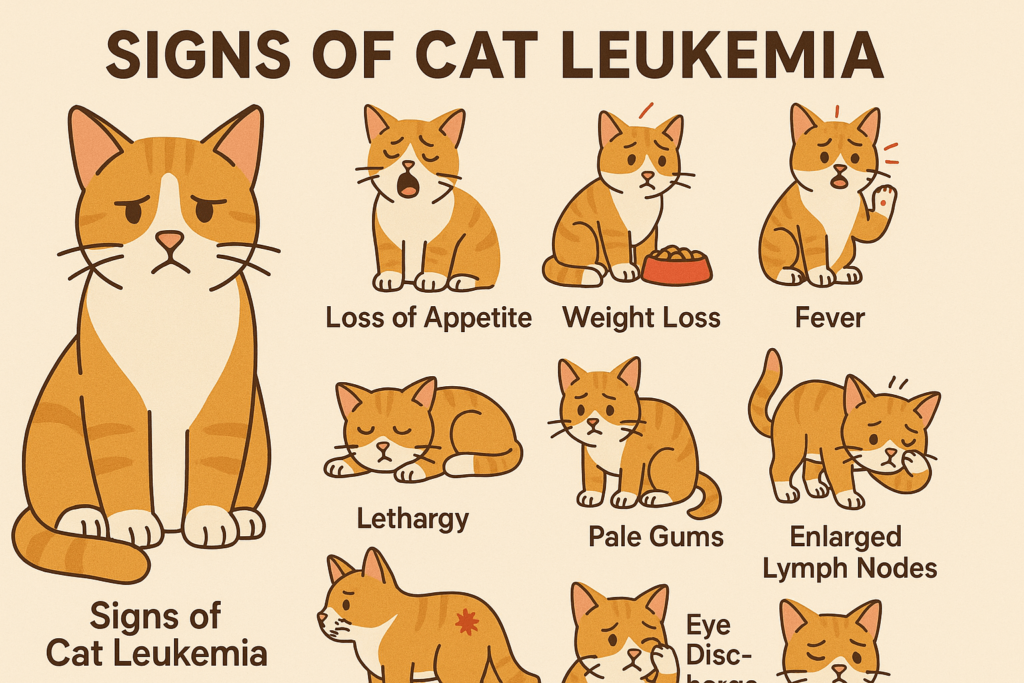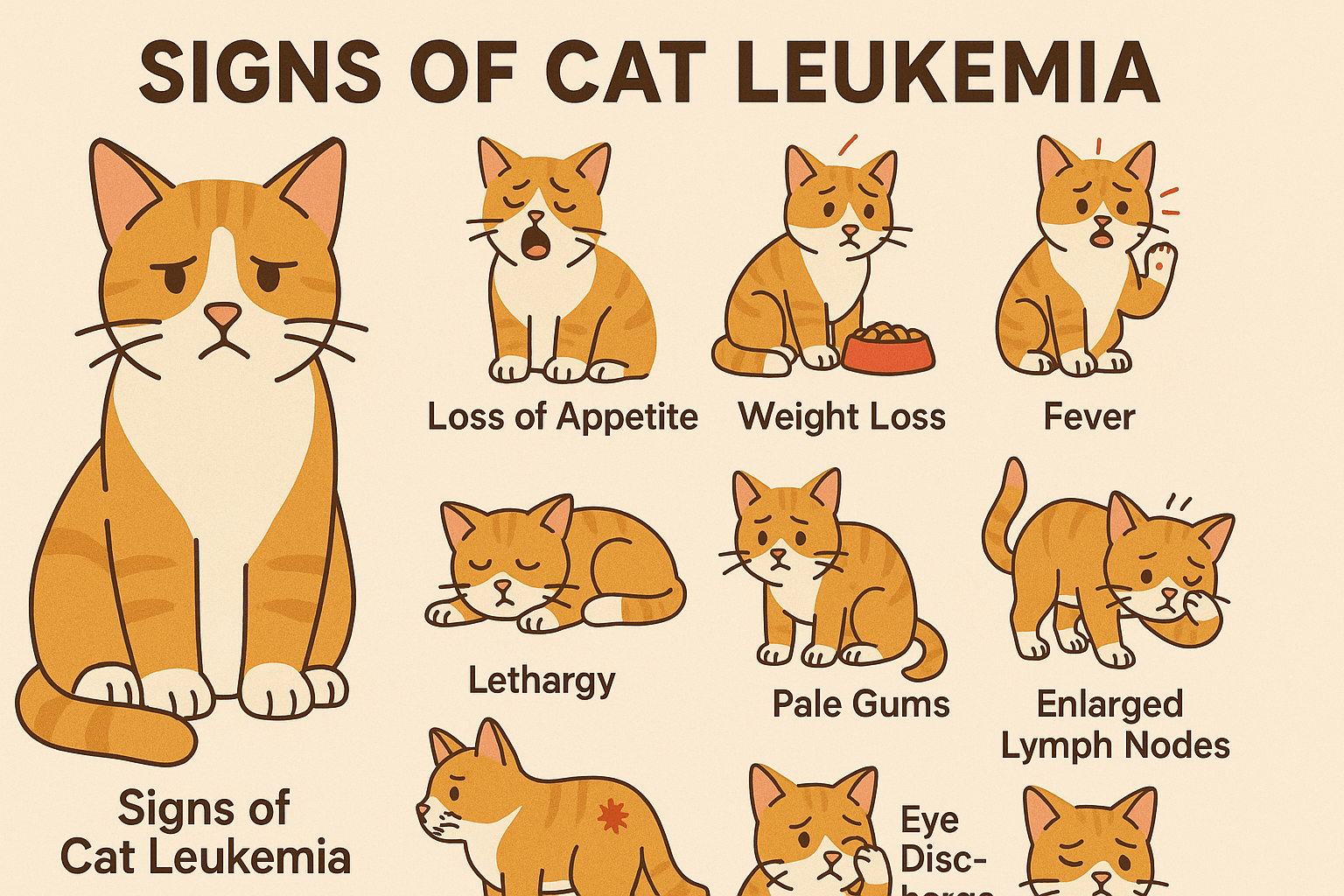Signs of Cat Leukemia: What Every Cat Owner Should Know
Cat leukemia, caused by the feline leukemia virus (FeLV), is a serious and often life-threatening condition that affects cats worldwide. While it cannot be cured, early detection and proper care can significantly improve a cat’s quality of life. Recognizing the signs of cat leukemia is crucial for pet owners, as it allows for timely intervention and management. From behavioral changes to physical symptoms, understanding what to look for can make all the difference in your cat’s health journey. In this article, we’ll explore the key indicators of cat leukemia, how to manage the condition, and steps you can take to protect your feline companion.
Expert Insight on How the Leukemia Virus Affects Cats
“The leukemia virus attacks the cat’s blood cells by invading tissue that makes up the blood cells, including bone marrow and lymph tissue. Blood cells (red blood cells, white blood cells, and platelets) play an important role in keeping the body supplied with oxygen and nutrients.”
Common Physical Symptoms of Cat Leukemia
Cats infected with the feline leukemia virus often exhibit a range of physical symptoms that can alert owners to potential health issues. These signs may vary in severity but are important indicators of the disease.
Persistent Fatigue:
Infected cats may appear unusually lethargic, sleeping more than usual or showing little interest in activities they once enjoyed.Weight Loss:
Unexplained weight loss is a common symptom, even if the cat has a normal appetite or seems to eat well.Frequent Infections:
Cats with FeLV are more prone to recurring respiratory, skin, or urinary tract infections due to a weakened immune system.Pale Gums:
Pale or yellowish gums can indicate anemia, a common complication of cat leukemia.Enlarged Lymph Nodes:
Swollen lymph nodes, particularly around the neck or throat, may signal an immune response to the virus.
These physical symptoms should not be ignored, as they can indicate the presence of cat leukemia or other serious health conditions. Early veterinary evaluation is essential for proper diagnosis and care.

Behavioral Changes Linked to Cat Leukemia
In addition to physical symptoms, cat leukemia can also cause noticeable changes in a cat’s behavior. These shifts often reflect discomfort or illness and should be taken seriously.
Loss of Appetite:
A cat that suddenly stops eating or shows disinterest in food may be experiencing nausea or pain related to FeLV.Increased Hiding Behavior:
Cats with leukemia may retreat to secluded areas more frequently, seeking solitude as a response to feeling unwell.Irritability or Aggression:
Some cats become more irritable or defensive due to discomfort or stress caused by the virus.Reduced Grooming Habits:
A decline in grooming can result from fatigue or a lack of energy, leading to a dull or unkempt coat.Changes in Social Interaction:
Affected cats may withdraw from human interaction or show less interest in playing with other pets.
Behavioral changes like these can provide valuable clues about your cat’s health and should prompt a visit to the vet for further investigation.
Check this guide 👉Traumatized Cat Symptoms: Best 7 Expert Tips!
Check this guide 👉Cat Sneezing No Other Symptoms: Best 7 Expert Tips!
Check this guide 👉Male Cat UTI Symptoms: Best 7 Expert Tips!
Early Warning Signs of Cat Leukemia | Advanced Symptoms of Cat Leukemia |
|---|---|
Persistent fatigue | Severe weight loss |
Frequent minor infections | Chronic diarrhea or vomiting |
Mild fever | Difficulty breathing |
Swollen lymph nodes | Neurological issues (e.g., seizures) |
Pale gums | Jaundice or yellowing of the skin |
How to Diagnose Cat Leukemia
Diagnosing cat leukemia requires a combination of clinical evaluation and diagnostic testing. Understanding the process can help you prepare for a vet visit if you suspect your cat is infected.
Veterinary Examination:
Your vet will conduct a thorough physical exam to assess your cat’s overall health and identify any visible symptoms.Blood Tests:
The ELISA (enzyme-linked immunosorbent assay) test is commonly used to detect FeLV antigens in the blood. It provides quick results during the initial screening.Confirmatory Testing:
If the ELISA test is positive, a follow-up IFA (immunofluorescence assay) test may be performed to confirm the diagnosis.Monitoring Symptom Progression:
Tracking changes in your cat’s health over time helps veterinarians determine the stage of the infection and plan appropriate treatment.Testing New Cats Before Adoption:
Always test new cats for FeLV before introducing them to other pets to prevent transmission of the virus.
Proper diagnosis ensures that affected cats receive timely care and minimizes the risk of spreading the virus to others.
Preventive Measures Against Cat Leukemia
While there is no cure for cat leukemia, prevention plays a critical role in protecting your cat from this devastating disease. Taking proactive steps can reduce the risk of infection significantly.
Vaccination:
Vaccinating your cat against FeLV is one of the most effective ways to prevent the virus, especially for outdoor or multi-cat households.Regular Vet Check-Ups:
Routine wellness exams allow your vet to monitor your cat’s health and catch potential issues early.Limit Exposure to Infected Cats:
Keep your cat indoors or supervise outdoor time to minimize contact with stray or infected animals.Separate Infected Cats:
If you have a cat diagnosed with FeLV, keep them separated from healthy cats to prevent transmission.Practice Good Hygiene:
Clean food bowls, litter boxes, and bedding regularly to reduce the spread of germs and viruses.
By implementing these preventive measures, you can safeguard your cat’s health and create a safer environment for all pets in your home.
Managing a Cat with Leukemia
Caring for a cat diagnosed with leukemia requires special attention and adjustments to their daily routine. Here are some tips to help manage their condition effectively.
Provide Nutritious Food:
High-quality, nutrient-rich diets support immune function and help maintain weight.Minimize Stress:
Create a calm and predictable environment to reduce stress, which can worsen symptoms.Schedule Regular Vet Visits:
Frequent check-ups allow your vet to monitor your cat’s condition and adjust treatments as needed.Isolate from Other Pets:
Keep FeLV-positive cats separate from healthy ones to prevent the spread of the virus.Administer Medications as Directed:
Follow your vet’s instructions carefully when giving medications or supplements.
With proper management, cats with leukemia can enjoy a comfortable and enriched life despite their diagnosis.
Supporting Your Cat’s Immune System
Boosting your cat’s immune system is vital for managing cat leukemia and improving their resilience against infections.
Supplement Their Diet:
Consider adding omega-3 fatty acids or probiotics to support overall health under veterinary guidance.Ensure Adequate Hydration:
Encourage water intake by providing fresh water or wet food to keep your cat hydrated.Maintain a Clean Environment:
Regularly clean your home to minimize exposure to bacteria and allergens.Encourage Gentle Exercise:
Low-impact play sessions help maintain muscle tone without exhausting your cat.Monitor for Secondary Illnesses:
Watch for signs of secondary infections, which are common in FeLV-positive cats.
Supporting your cat’s immunity can enhance their ability to fight off complications and stay healthier longer.
Coping Emotionally as a Pet Owner
Dealing with a cat leukemia diagnosis can be emotionally challenging for pet owners. Here are some ways to cope and find strength during this difficult time.
Educate Yourself:
Learning about FeLV empowers you to make informed decisions about your cat’s care.Seek Support from Others:
Join online forums or local groups for cat owners facing similar challenges.Celebrate Small Wins:
Focus on moments of joy and progress, no matter how small, to stay positive.Take Care of Yourself:
Prioritize self-care to ensure you have the energy and emotional capacity to care for your cat.Consult a Vet Regularly:
Building a strong relationship with your vet provides reassurance and guidance throughout the journey.
Remember, your love and commitment are invaluable gifts to your cat, helping them live their best life despite the challenges of leukemia.
Frequently Asked Questions About Cat Leukemia
Can cat leukemia be transmitted to humans?
No, FeLV is species-specific and cannot be transmitted to humans or other non-feline animals.
Is there a cure for cat leukemia?
Unfortunately, there is no cure for FeLV, but supportive care can improve a cat’s quality of life.
How long can a cat live with leukemia?
Life expectancy varies depending on the cat’s overall health and the stage of the infection, but many cats live for several years with proper care.
Should I vaccinate my indoor cat against FeLV?
Vaccination is recommended if there’s any chance of exposure, such as through accidental escapes or visiting cats.
What should I do if my cat tests positive for FeLV?
Consult your vet for a tailored care plan, including regular monitoring, a nutritious diet, and minimizing stress.
Taking Action for Your Cat’s Health
Recognizing the signs of cat leukemia is the first step toward ensuring your feline companion receives the care they need. Whether you’re observing subtle behavioral changes or more obvious physical symptoms, staying vigilant and seeking veterinary advice promptly can make a significant difference. With advancements in veterinary medicine and preventive strategies, cat owners have the tools to protect their pets and offer them a happy, fulfilling life. Remember, knowledge and compassion go hand in hand when caring for a cat with leukemia—your love and dedication are their greatest allies.
Understanding Cryptosporidium in Cats: Best 7 Expert Tips! – Spot symptoms, treat safely, and stop parasite spread in your home.
Understanding Cryptosporidium in Dogs: Best 7 Expert Tips! – Learn symptoms, treatment & prevention for this stubborn gut parasite.
Understanding Syringomyelia in Cats: Best 7 Expert Tips! – Recognize signs, manage pain, and support your cat’s neurological health with vet-backed guidance.
Understanding Syringomyelia in Dogs: Best 7 Expert Tips! – Expert insights on symptoms, MRI diagnosis, pain management & quality of life.





